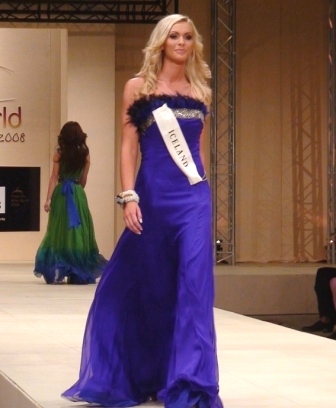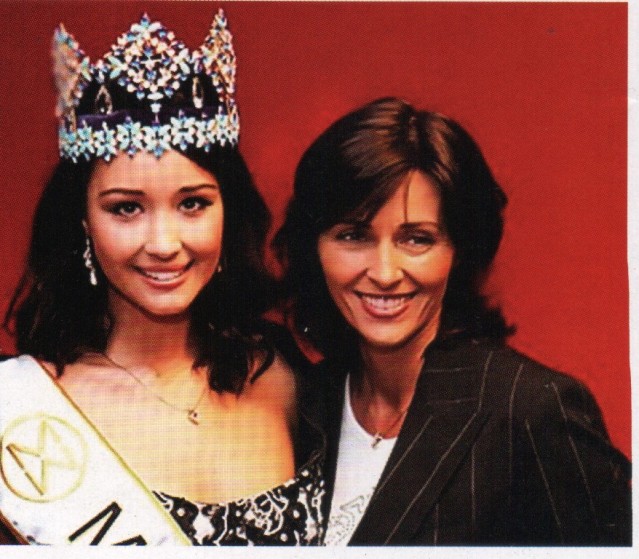It was not the usual Miss World pageant that we know. The year was 1958 and it was a far cry to todays 100 plus contestants. The total headcount – 22. Not even the superpower nation of India was represented. But among the 22 beauties who participated was a young Icelandic beauty named Hjordis Sigurvinsdóttir. What makes it rather odd for Hjordis to sashay inside the Lyceum Theatre in London is that her country was technically at war with the host nation.

In September 1, 1958, Iceland expanded its fishery zone from 4 miles to 12 miles which effectively threatened the livelihood of British fishermen who regularly scour the rich fishing grounds of Atlantic for a fish called cod. To protect its fishing industry, the British sent its naval ships in the area. The first shots were fired a week before the Miss World finals when V/s María Júlía threatened the British trawler Kingston Emerald.
The contest between Iceland and Britain over the fishing grounds in the Atlantic was called as the Cod Wars. It was a battle for resources that never resulted into a full-scale war and thankfully, no casualties was ever recorded [although some sources cite that each had one casualty]. It was an on and off war with the Second War began in 1972 after Iceland expanded its fishing zone to 5o miles and then the third war kicked in 1975 when Iceland declared that the zone within the 200 miles from the island nation would fall under its jurisdiction.
Within that time frame where Iceland and Britain had a friction, Iceland was a regular clapper at the Miss World despite religiously joining the pageant (although it skipped the pageant twice between 1958-1976). The Cod Wars concluded with Iceland as victorious and Britain eventually retreated. By the 1980s, the British and Icelandic relationships were slowly healing and by 1983, Iceland made a breakthrough at Miss World – Unnur Steinsson became 4th runner-up.
What then followed was an amazing recognition of Icelandic beauties and a successive wave of victories unmatched in other major pageants at that time. To date, Iceland boasts three crowns at Miss World up against its lone victory at Miss International and its dismal performance at Miss Universe and Miss Earth. Was the poor performance of Iceland at the early years of Miss World the result of the three Cod Wars? Was the good showing of Iceland in the 1980s be attributed to the normalization of Icelandic-British relationships?
Of course it is farfetched to insinuate that somehow, Icelandic beauties were ignored at Miss World solely because of the Cod Wars. But there could be a psychological effect when there is a friction between the two countries. It was true for example that the British public viewed Iceland at that time rather poorly and vice-versa. This could have negatively influenced the judgment of the mostly British jury when assessing an Icelandic beauty.
What is a more plausible explanation for Iceland’s turnaround is that Ungfru Island began to send it winners at Miss World only in 1983 and yes that was Unnur Steinsson. Since then, Iceland began sending its very best to Miss World. But could it also be possible that the best of Iceland was sent to Miss International and Miss Universe rather than to Miss World largely because of the Cod Wars?
As mentioned, Iceland eventually won the Cod Wars. However, it was not because of its military might but because of its strategic importance. The country threatened to kick out the NATO military base in its soil if its 200 mile zone will not be honored. This could mean a direct blow to the alliance which includes Britain. The base was geographically important to thwart any Soviet incursions at that time. Britain knew that its common security with other Western nations were far more important than its declining fishing industry.

Interestingly, Iceland was very successful in the years of 1983-1988 when Soviet power was its peak. When the communist power collapsed in 1989, Iceland became a clapper at Miss World and it continued to be so until 2005 when Unnur Birna (which is the daughter of Unnur Steinsson!) became the third Miss World from Iceland. Was it all a coincidence or was the strategic importance of Iceland and Britain’s policy of appeasement played a big role?

Politics is inevitable in the world of pageantry. The Cod Wars and its effect on Iceland’s fortunes at Miss World is an interesting case study. There is no doubt that the friction between Iceland and Britain had indirect effect on Iceland’s quest for the crown. It is all about the image and perception. When a nation is perceived in a positive way, it helps a contestant a lot. When the nation is in turmoil or it has a bad reputation, somehow it could deliver negative results. Like anything else in this world, Big4 pageants are not immune to the current events. Truly, this would reinforce the belief that winning a crown is being the right girl, at the right place and at the right time. And perhaps, being from a right country as well.








Comments are closed.